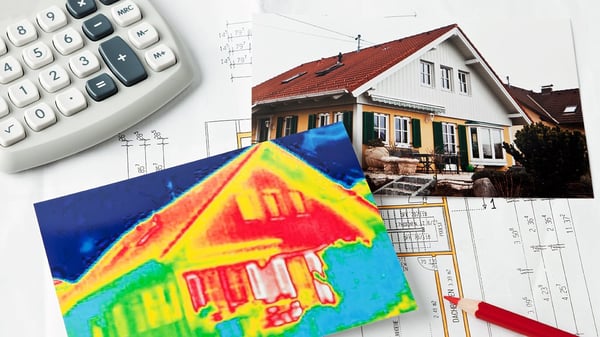New Home Insulation Problems: 5 Things You Don’t Want to Happen


Insulating your new home is just as important as choosing the right flooring in the kitchen, but you also need to research what could possibly go wrong.
From cold and uncomfortable rooms to condensation problems, there are several things that can go wrong when insulating your new home.
RetroFoam of Michigan has more than 15 years of experience insulating new construction homes across the lower peninsula. In this time, we have been called out to newer homes that have serious insulation problems. These problems could have been avoided had the house been built with the proper insulation.
In our continued efforts to educate homeowners, we have compiled a list of 5 new home insulation problems and how to fix them.
RELATED: What are the Best Insulation Options for New Homes? (Spray Foam vs Fiberglass vs Cellulose)
New Home Insulation Problems

1. Closed Cell Spray Foam Pulling Away From Studs
A new home will shift and settle as time goes on. Closed cell spray foam is a rigid foam insulation, and because of this rigidness, it won’t move and shift with a new home. This can cause the spray foam to pull away from the studs where it has been applied.
Solution: Most contractors will recommend open cell spray foam because of this. Open cell is a pliable material that will move and shift with your new home.
RELATED: Open Cell vs. Closed Cell Foam Insulation: Which Is Better for My Home?
2. Bonus Room Above Garage is Too Hot or Cold
If the bonus room above your garage is uncomfortable, a lack of insulation is the culprit. The cold or hot air coming through the garage is going right through the ceiling and into the bonus room.
Solution: When discussing insulation for your new construction home, make sure to discuss creating an air seal in the roof of the garage. This air seal will help greatly with keeping that bonus room cool in the summer and warm in the winter once you’re all moved in.
RELATED: Bonus Room Insulation Problems
3. Mechanicals Throughout the Home are Larger Than You Need
There is a test called a “Manual J” which measure the amount of BTU needed to fully heat a new home. If your home has an air seal using foam insulation, it won’t need such large mechanics and will use less BTU to heat the house.
Solution: Talk to your builder to make sure you are on the same page about what mechanics will be needed compared to the insulation you will have installed.
4. There’s No Air Seal Around Windows or Doors
When the windows and doors are installed, there is a possibility the contractor didn’t put any kind of air seal or insulation around those places. This will lead to comfort issues in your new home, as well as higher energy bills as the cold air leaks inside.
Solution: Your spray foam insulation contractor can insulate around the windows and doors to ensure you have the air seal that you want throughout your home.
5. Condensation Issues on Ceiling or Walls in the House
If your contractor decides to use flash and batt insulation but installs it incorrectly, it will lead to condensation problems. Some insulation contractors will only apply 1-inch of closed cell and then add the fiberglass, which doesn’t create an air seal, so condensation forms. Fiberglass retains that condensation, which can lead to mold and mildew growth.
Solution: If your insulation contractor plans to use flash and batt, ensure they are creating an air seal to avoid these moisture issues. It should be noted that 2-inches of closed cell creates an air seal, so the added fiberglass isn’t technically needed.
RELATED: Flash and Batt Insulation Problems
Avoiding Disaster with An Experienced Insulation Contractor
It's good to understand what could go wrong, especially down the road, with the insulation in your new home. Making these choices now can prevent many headaches in the future.
Something else that is just as important as the insulation is the reputation of your insulation contractor. A good contractor will not only provide a quality insulation install but will also help you understand all the pros and cons so you can make the best decision for your home.
Need some tips when hiring a contractor? Check out our insulation contractor vetting checklist.
Related Articles
About Amanda Emery
Amanda previously has worked as a breaking news and crime reporter, TV news producer, and editor in Flint and Detroit. Throughout her career as a journalist, she has won several awards from The Society of Professional Journalists - Detroit Chapter and the Michigan Press Association. As part of the RetroFoam of Michigan family, Amanda uses her experience as a journalist to write content that will help educate homeowners on the benefits of foam insulation. When Amanda isn’t writing, she’s spending time with her husband and rescued huskies. She also loves knitting, making art, cooking, and hosting dinner and a movie night for friends and family.


